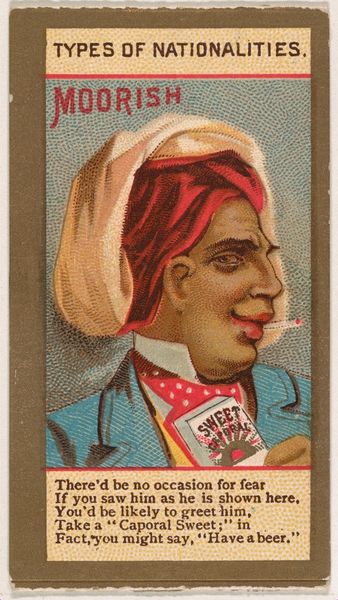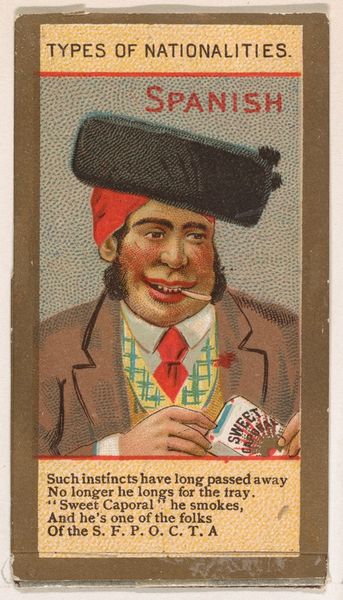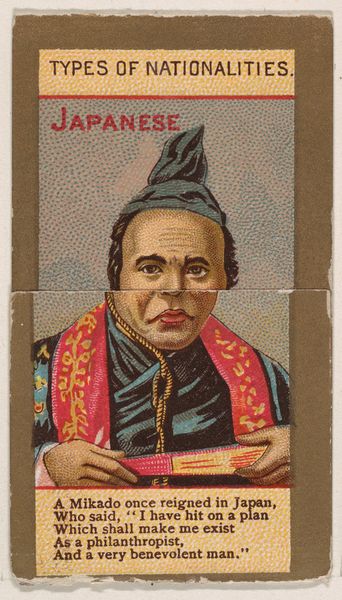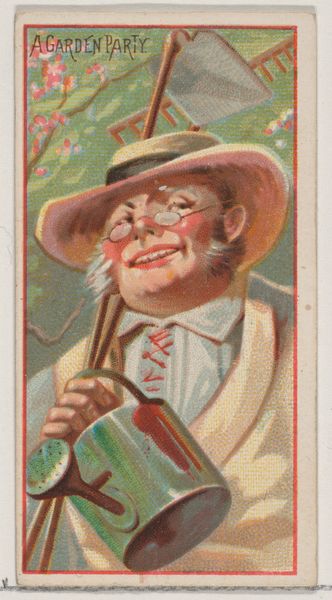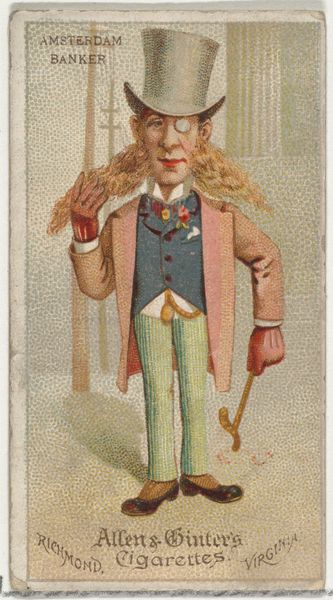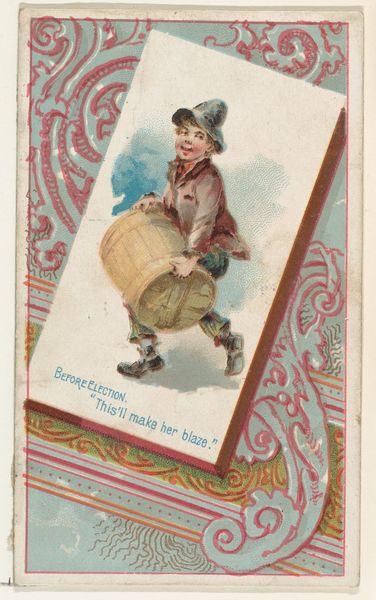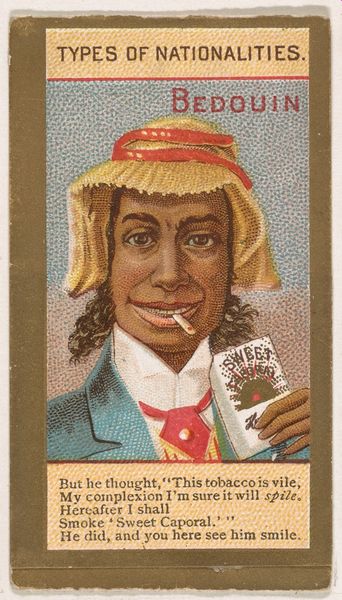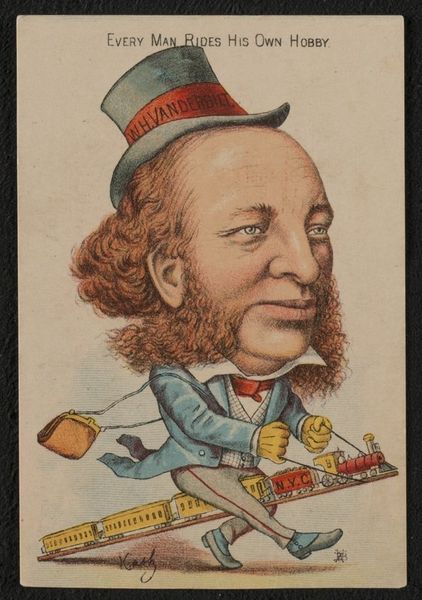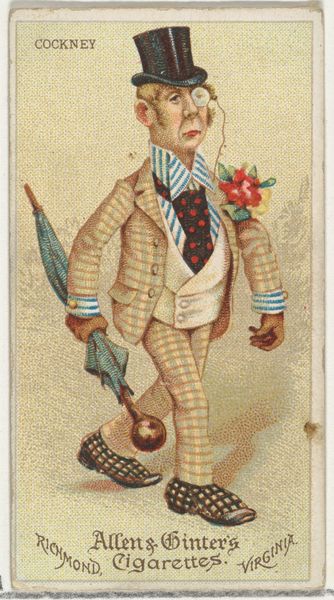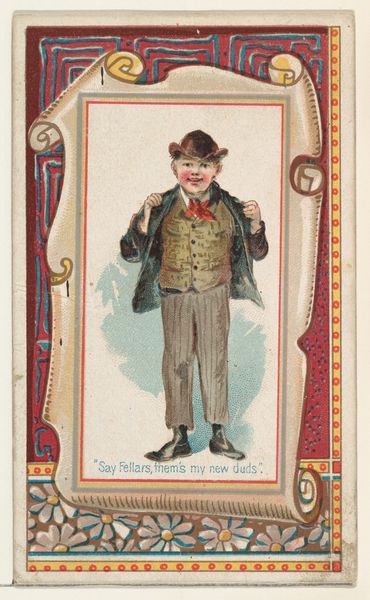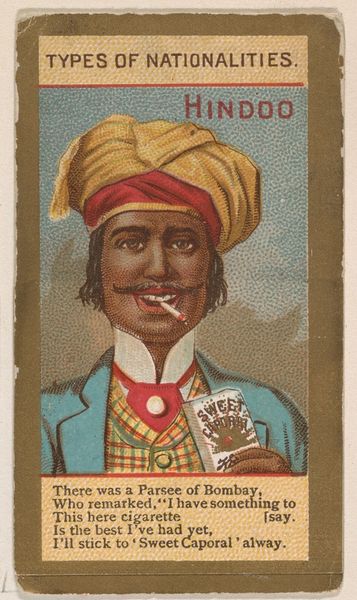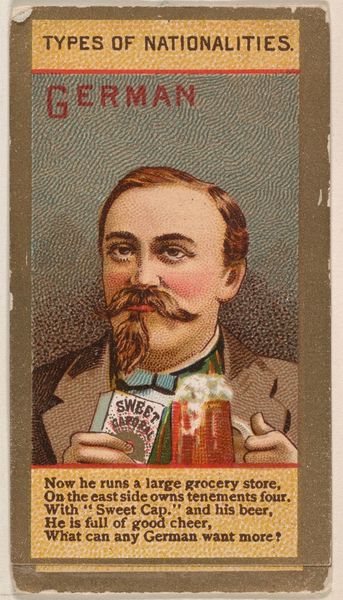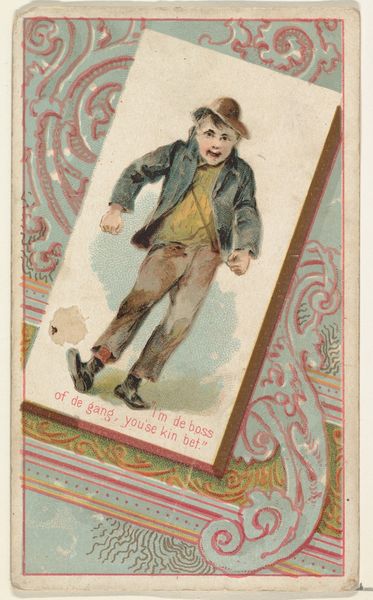
Japanese, from Types of Nationalities (N240) issued by Kinney Bros. 1890
0:00
0:00
Dimensions: Sheet (Folded): 2 11/16 × 1 7/16 in. (6.8 × 3.7 cm) Sheet (Unfolded): 6 7/8 × 1 7/16 in. (17.4 × 3.7 cm)
Copyright: Public Domain
Curator: Let’s examine this lithograph from 1890, part of the "Types of Nationalities" series issued by Kinney Brothers Tobacco Company. It's called “Japanese.” Editor: My first thought? The whole thing has a disturbing quality, especially the exaggerated features and the oddly gleeful expression. Curator: Indeed, it employs the visual language of caricature quite overtly. Notice the bold outlines, simplified forms, and high contrast—all characteristics heightened by the printmaking process. The flattened perspective and decorative details show some visual consideration to Ukiyo-e prints from Japan. Editor: But it completely misses the point! Ukiyo-e at least attempts a kind of elegant naturalism, where this descends into outright... Orientalism, plainly. “Types of Nationalities” – the very title suggests an exercise in stereotyping. This image, with its “decree” that “everybody must smoke Sweet Caporal,” seems to reduce an entire culture to a commercial for tobacco. Curator: Well, we can appreciate that this sort of advertising art operated under its own set of constraints and conventions, however tasteless they may seem now. Note the attention given to textual elements here too, not only visually through letter form design but also through narrative and humor which, by today's standards, would certainly be deemed culturally insensitive. Editor: The way the figure holds both the "decree" and a package of cigarettes as supposed cultural artifacts is troubling. There’s a definite power dynamic at play—a late-19th-century Western gaze attempting to define and ultimately diminish an entire population. Curator: The composition functions efficiently as advertisement using visual and textual elements to draw one’s eye from top to bottom. And while our contemporary understanding has grown, the artwork remains a useful object from which to understand cultural biases of its era. Editor: Precisely! Its aesthetic qualities may be dubious at best, but as a case study in how cultural misunderstanding gets packaged and sold, it's brutally effective. Curator: It’s a potent reminder of the power—and potential harm—embedded within visual representation. Editor: A mirror reflecting not just the subject, but the society that created the image, for better or worse.
Comments
No comments
Be the first to comment and join the conversation on the ultimate creative platform.
